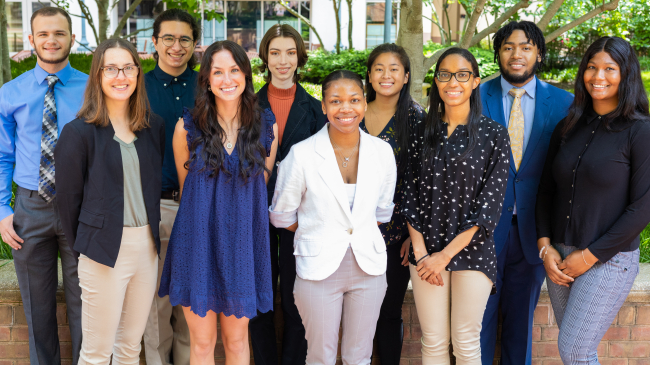I chose to create a digital painting of my Hollings internship research subject — the Caribbean spiny lobster. I studied a nemertean worm that could threaten their reproductive success and long-term population survival. I hope this painting becomes a reminder of the value, not only to our economy and livelihoods, but to the unique beauty of our world. The disconnect between active research and the broader community is one I hope to close during my career in marine ecology. Art connects people from all different backgrounds and interests towards a common beauty. I believe art will help to close the gap between research and the public, sparking interest in marine life while emphasizing the importance of protecting these incredible ecosystems.

More about my research
Caribbean spiny lobsters (Panulirus argus) are valuable to Caribbean fisheries and the health of coral reef communities as both predator and prey. They are vital to the economic success of southern fisheries, with 2021 landings of Caribbean spiny lobster valued at $42 million. In 2016, Antonio Baeza, Ph.D.’s lab, who we partnered with on this study, discovered a nemertean (Carcinonemertes conanobrieni) among egg masses of Caribbean spiny lobster. The nemertean preys on the eggs of the spiny lobster, potentially putting Florida’s fisheries at risk — other closely related nemertean species have contributed to crustacean fishery collapses across the United States.


For my internship at the Southeast Fisheries Science Center Keys Marine Laboratory, I researched whether characteristics of a Caribbean spiny lobsters’ shelter and social behavior could affect the intensity of a C. conanobrieni infection. Understanding these relationships is important because they provide insight into lobster-nemertean ecological interactions, which is the first step towards forming effective management practices. With the guidance of my mentors and assistance from graduate students at Clemson University and University of Florida, we collected field images and assessed egg-bearing lobsters for infection.
Contributions to the studies of C. conanobrieni on P. argus were from members of Antonio Baeza, Ph.D.’s lab at Clemson University (Natalie Stephens, Alyssa Baker, Erin Griffing) and Donald Behringer, Ph.D.’s doctoral student, Lucas Jennings. I could not have pursued this project without the guidance of my mentors, Mark Ladd, Ph.D. (head of the Coral Ecology Unit at the Southeast Fisheries Science Center in Miami) and Donald Behringer, Ph.D. (marine and disease ecology professor at the University of Florida).
Heather Bruck is a 2021 Hollings scholar and marine biology major at the University of South Carolina.




